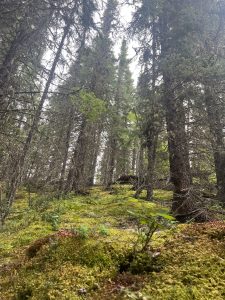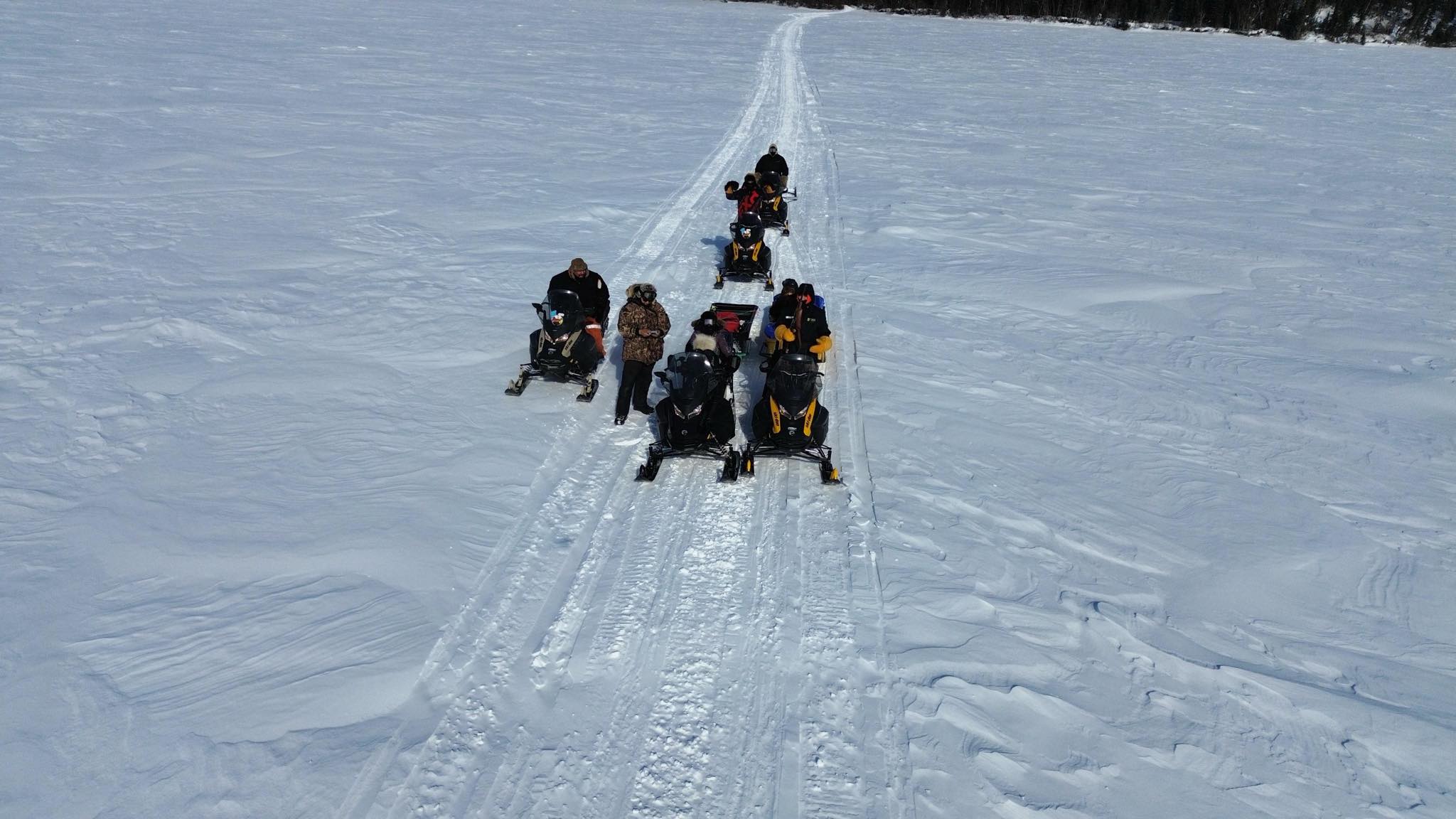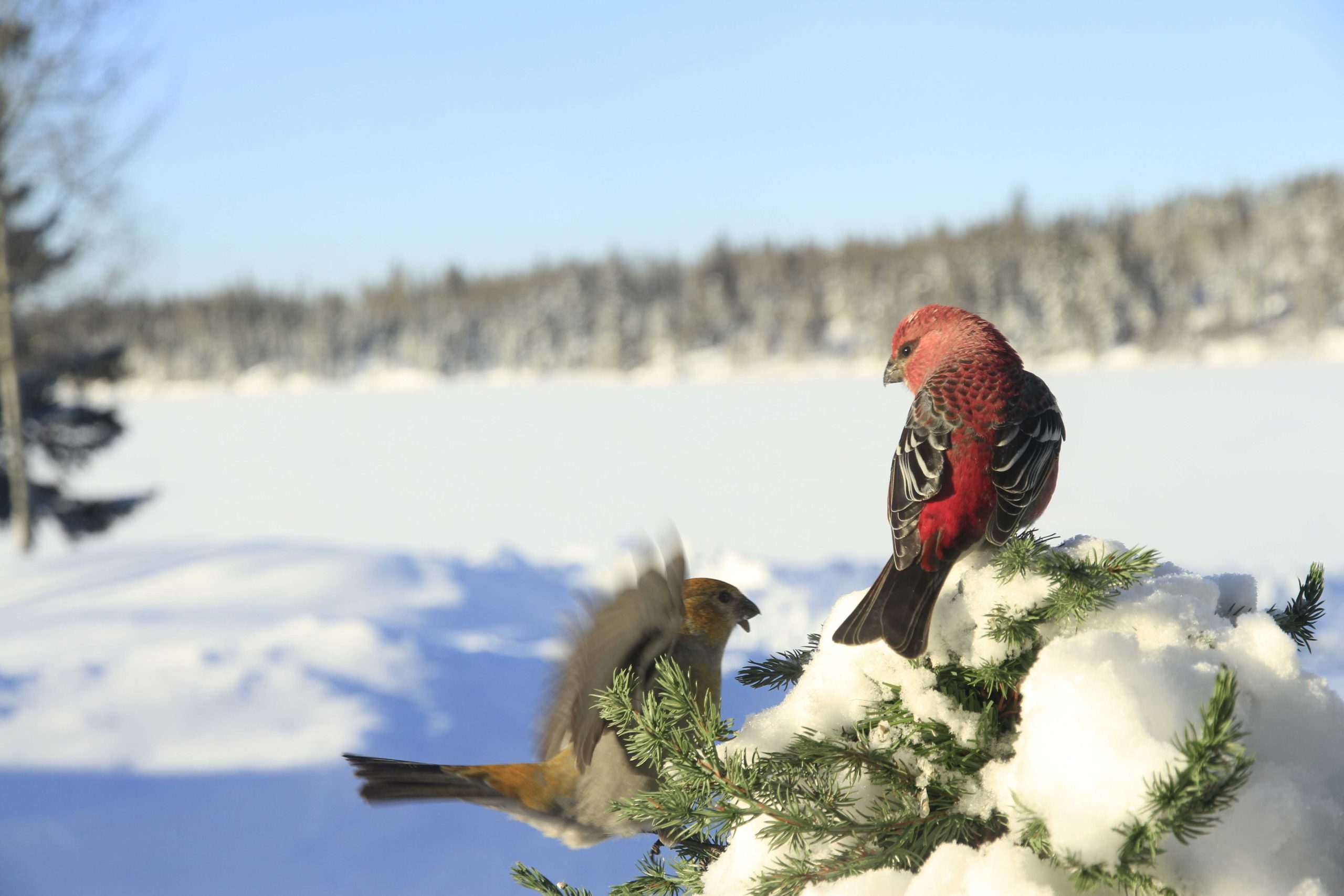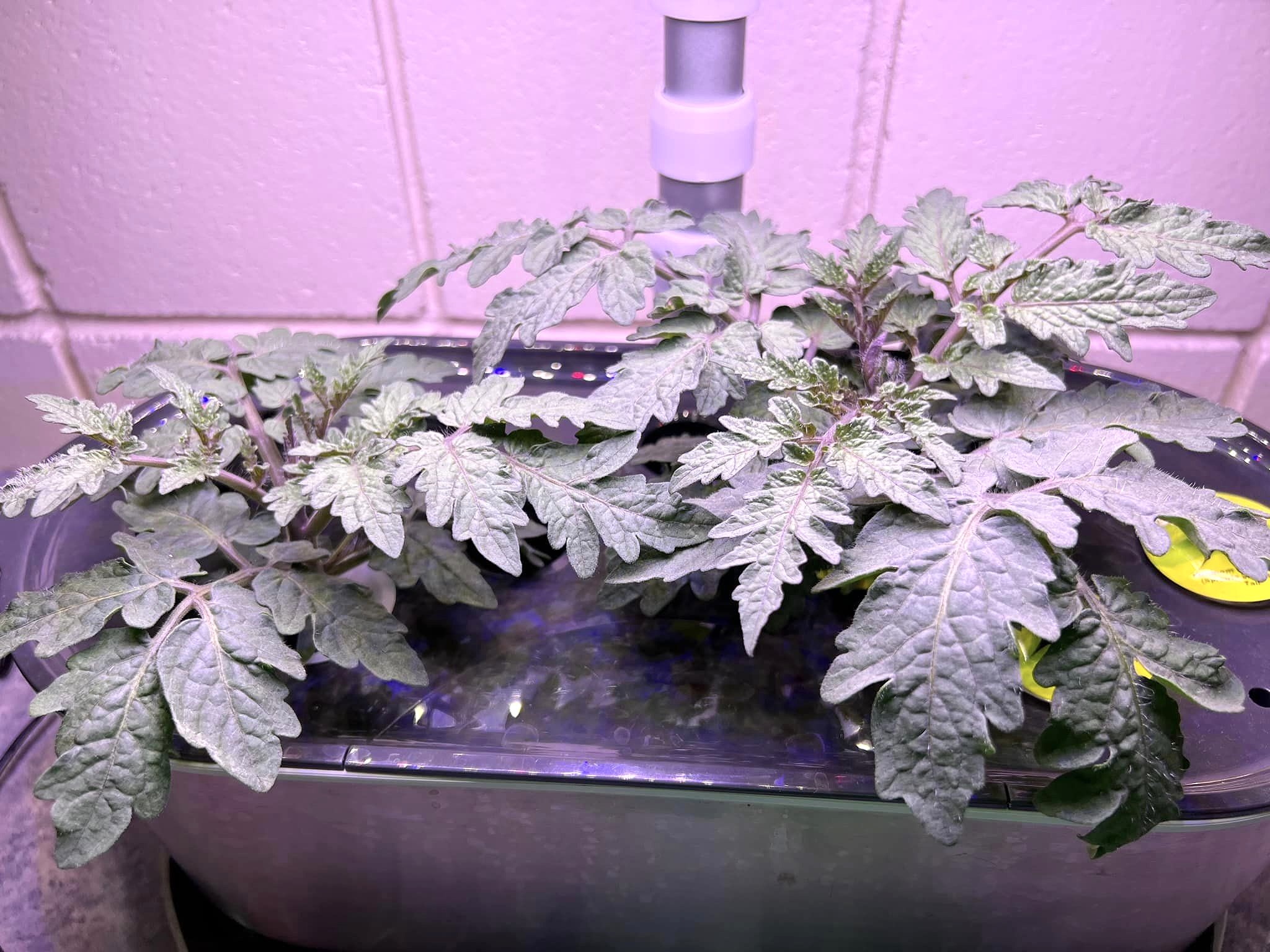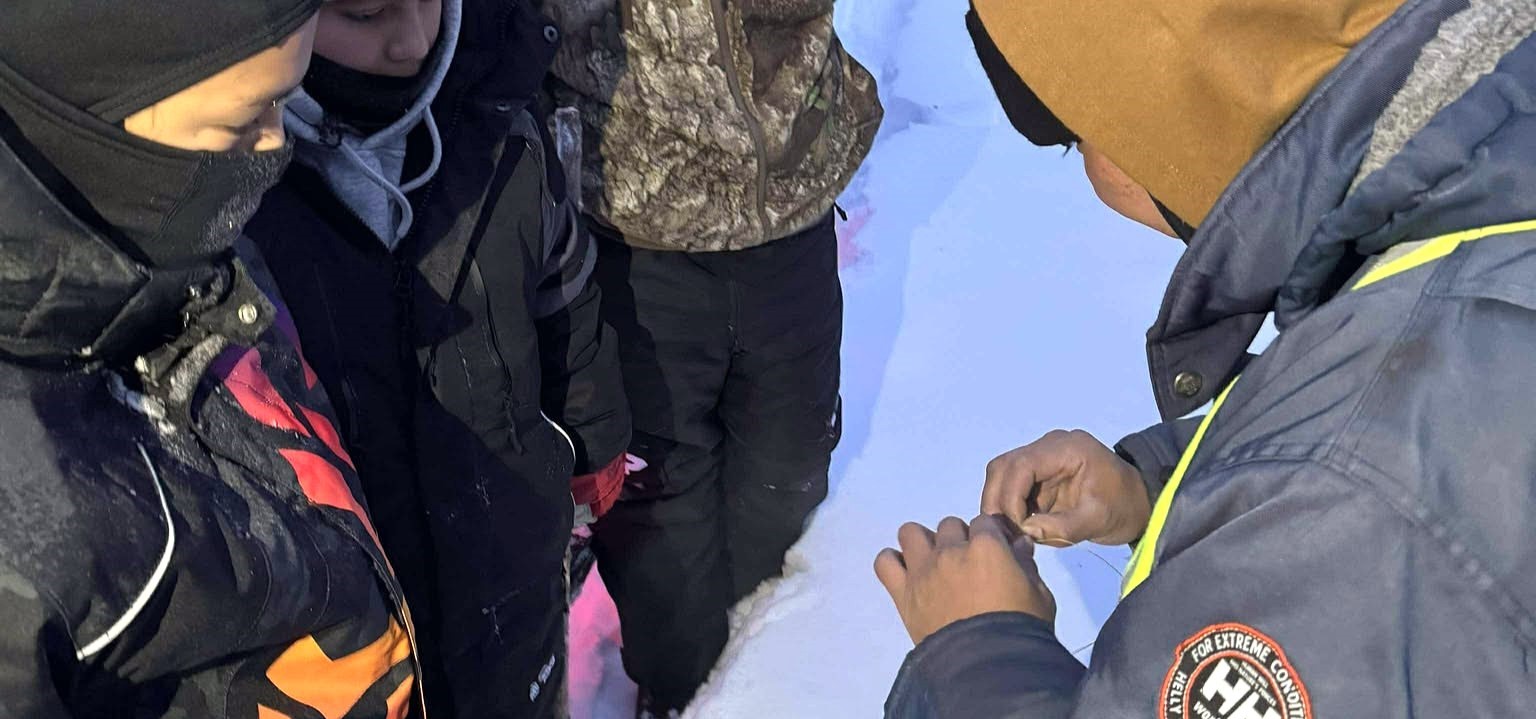Indigenous harvesters and Manitoba Non-Profit Food Matters Manitoba adapt to the ongoing effects of climate change in the north.
By Chantal Marie Schromeda
Traditional Indigenous harvester Myron Cook, in Kisipakamak (Brochet), depends on the biodiversity in the north for healthy and traditional foods that are distributed amongst the elders, the community, and his family.
But ongoing wildfires, low water levels, and health hazards brought on by climate change are posing a serious threat to habitats in the north and the traditional ways of living.
“Everything has changed due to climate change,” says Cook.
Climate change has damaged the land, the water, and life – affecting traditional practices in Indigenous communities, leading to distress, states a 2020 study published in Environmental Health.
Indigenous territories in the north are impacted the hardest in Canada by the effects of climate change, according to a 2021 Indigenous Climate Action report. According to Canada’s Changing Climate Report in 2019, the north will warm at three times the global rate in comparison to the rest of the country warming at twice the global rate.
With the effects of climate change felt across the north, traditional harvesters in Manitoba, their communities, and Manitoba Indigenous non profit, Food Matters Manitoba (FMM), are working to adapt to climate change’s effects in order to continue building local and prosperous food systems.
Indigenous food systems have thrived for thousands of years because of the depth of the relationship with the land, explains FMM’s Executive Director, Demian Lawrenchuk.
“The people travelled between key locations at precise times throughout the year to ensure they had access to the necessary resources and food,” says Lawrenchuk.
“This relationship and the associated patterns of life, remain relevant and necessary for the wellbeing of so many people that call this region home today,” he adds.
In the north, life has historically been understood as tough and uncertain – communities have a fragile connection to the global supply and food production network stemming from the dependency colonization has created, explains Lawrenchuk.
Now, with the current climate crisis, there is instability to the ecosystem’s predictable ancient cycle, and harvesters in the north are faced with immense new challenges, he states.
Heading out onto the land to travel his and his ancestors’ traditional hunting routes, Cook remembers having a plethora of traditional foods and medicines to harvest and pick for the community.
But those traditional routes are no longer what they once were.
“With the warmer climate it’s harder, everything is burning,” says Cook, FMM’s Community Project Coordinator. “The caribou don’t walk in the same places anymore – that’s one of the big challenges we face as harvesters.”
Caribou are nomadic beings and their migration routes during winter have drastically changed as a result of climate change, explains FMM’s Northern Programs Manager, Myles King.
“As access to their seasonal foods remain longer in the farther north, the need to come farther south is no longer there – making communities travel farther to harvest,” says King.
The caribou have been essential historically for survival in the isolated community of Kisipakamak – providing clothing, moccasins, tools, and food, explains Cook.
“Us, our people, we really depend on the caribou – we really depend on it,” he adds. “If it wasn’t for the caribou, our people of the Barren Lands would not be here today.”
According to Manitoba Wildfire Service (MWS), as of August 6th there have been 216 wildfires in 2024.
While 77 of those wildfires have been human caused, the majority are caused by the ongoing lightning activity across the province. MWS is anticipating several new fires will be appearing daily as a result of lightning.
“The increase in temperature and decrease in humidity means more forest fires from thunderstorms, which changes the habitat for many animals and the migratory routes of the nomadic mammals,” says Cook.
The ongoing forest fires have a direct effect on the loss of plant and animal life, and evacuations lead to many harvesting challenges, states FMM’s Northern Coordinator, Morgan McCurdy.
As the thick smoke billows out from the forest, Cook says the fires pose ongoing health concerns for him and and fellow harvesters.
“The forest fires with heavy smoke really is a challenge with visibility for travel and for health,” he says. “We have to time any plans we have on the land for safety reasons.”
High temperatures also increase the risk for heat related illness.
“Higher temperature and dryer weather make it harder on the body as well – increasing the chance for heat exhaustion and heat stroke, which is very dangerous for hunters and fishermen,” states Cook.
Adapting to the ongoing climate crisis is no small feat, but Indigenous populations have been adapting to the ecosystem for centuries, states the 2020 Food and Agriculture Organization of the United Nations (FAO) report.
FMM’s goal is to get to the root of the issue by building long-term change, so communities can adapt to climate change in a way that best suits them.
“We are methodically and consistently building capacity within communities through long-term employment and training,” says Lawrenchuk. “This approach empowers communities to respond to and overcome the challenges of climate change, food insecurity, and colonization in a way that is most meaningful to them.”
FMM also sources and ships materials to communities from Winnipeg, finds and provides guidance for northern employees, and secures funding for increased operations cost.
It’s important to be prepared, and FMM is adapting to react quickly to the erratic seasonal shifts, explains King.
“This includes our work sending materials up on the winter roads and our support for seasonal harvests,” he says. “We also have to be mindful about providing the resources to keep the harvests without spoilage.”
While the traditions and food systems of Indigenous communities have survived colonization, displacement, and varying climates, according to the FAO report, that does not negate that climate change is a huge challenge – one that Cook explains he’s experienced all over North America.
As the seasonal patterns become increasingly irregular, there is no longer a steady cycle for harvesters to anticipate.
Traditional harvester in Makeso Sakahikan (Fox Lake/Gillam), Lawrence Saunders, explains that every year is now different.
“There is never a steady cycle,” he says.
Saunders often works with the youth in his community as a mentor – bringing his children and other youth onto the land to show them how to harvest traditional foods and pick medicines.
This year, the uptick in bugs has been out of control.
“While trying to pick medicines you have to make sure you have bug spray or bug jackets, or they’ll drive you crazy,” he says.
In Kinosao Sipi (Norway House), traditional harvester Lester Balfour frequently brings the youth out onto the water to show them how to set nets and harvest fish for the elders and their community, but the water levels often fluctuate – affecting the fish, states Balfour.
Varying water levels and unpredictable storms brought on by climate change causes damage to equipment – affecting traditional harvesters ability to provide food for their communities, explains Lawrenchuk.
“Hazardous and low water conditions cause more frequent damage to boats, propellers, and nets, harvests become harder to process before spoiling, and the cost or even ability to repair and replace equipment is not always possible,” he says.
Low water levels also create hazardous or unnavigable conditions on the waterways and cause stress on fish populations – harming spawning activities, adds Lawrenchuk.
Cook explains the fish’s spawning activities have been affected by the rising water temperatures over the years.
“The increase in water temperature changes all the fish’s behaviour and spawning patterns – with the drought and less rain, the water levels dropped significantly which prevents us from accessing many hunting and fishing spots or makes it harder,” says Cook. “Also, for the change in water temperatures, we had to take into consideration the change in fish behaviours with the quicker melting of the ice changing their spawning times.”
These behavioural changes mean harvesters must reroute their travelling routes to certain harvesting locations, explains Cook.
All of these challenges of instability in the natural world lead to an inability to secure necessary food for families and households, adds Lawrenchuk.
Adjusting to these new routines brought on by climate change can be difficult.
“Goose season comes quicker, berry season is shorter, and polar bears and seals come farther inland,” says McCurdy. “Having to learn these new routines and adjust to these changes is quite a challenge.”
But the mutually respectful relationship between Indigenous Peoples and the land is a way of life, and the continuation of traditional harvesting is vital for Northern communities, states Balfour, who is FMM’s Northern partner.
“Indigenous landbase is who we are, it’s a way of life,” he says.
Though ongoing environmental degradation continues to pose a threat to communities in the north, Cook stands firm in his belief that traditional harvesters will continue to adapt and overcome the challenges climate change presents to them.
“As Native people we overcome and adapt to any challenges, and any changes to the land and environment brought forth to us,” he says.

